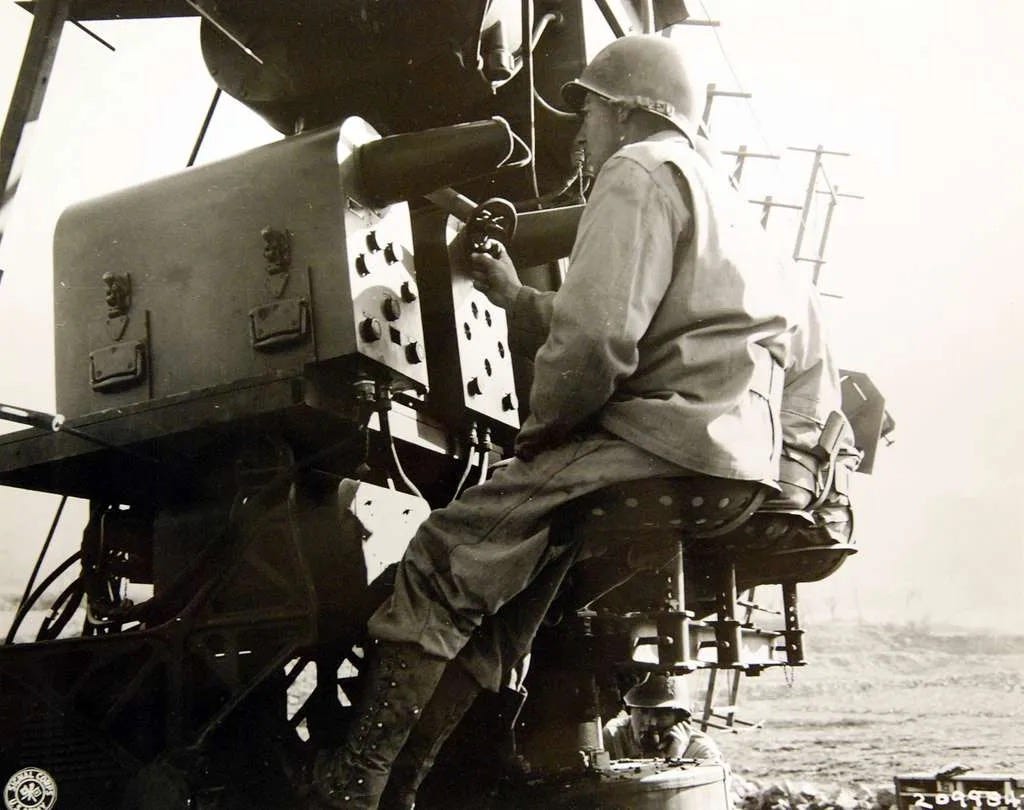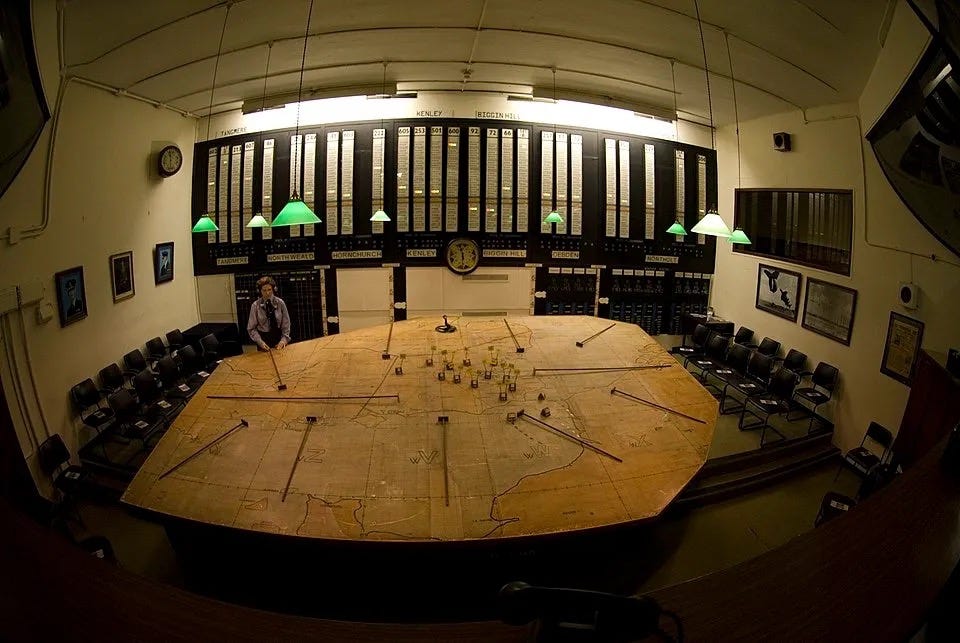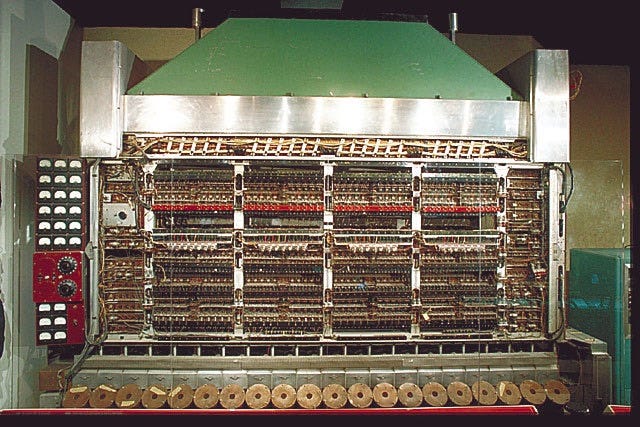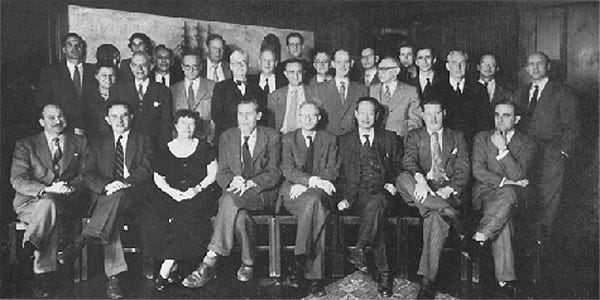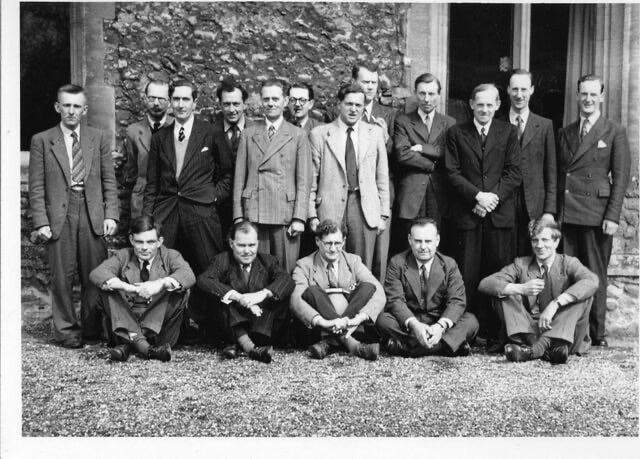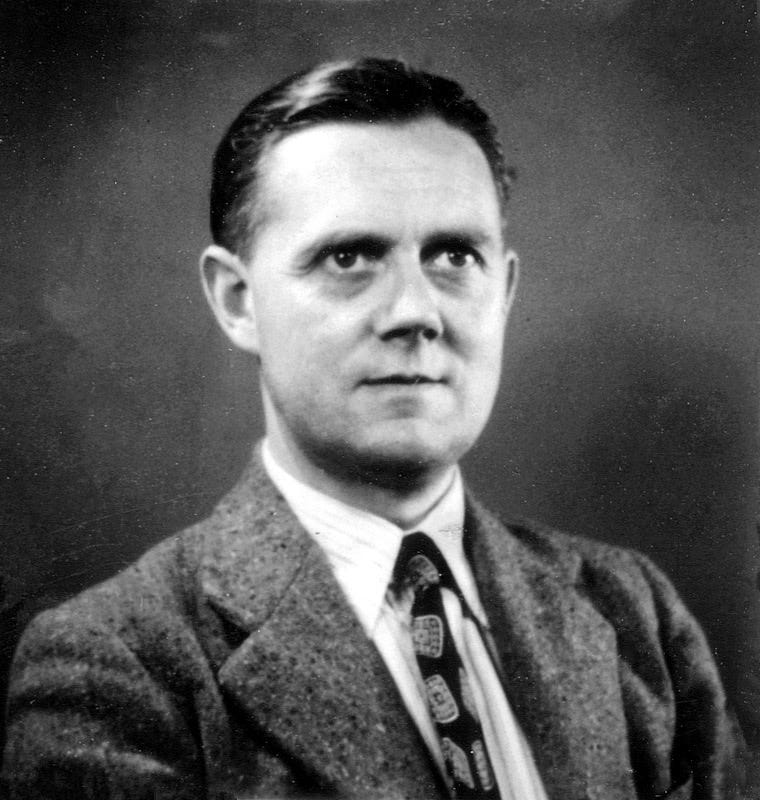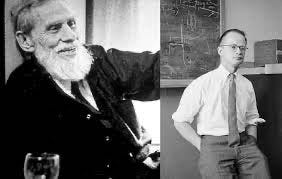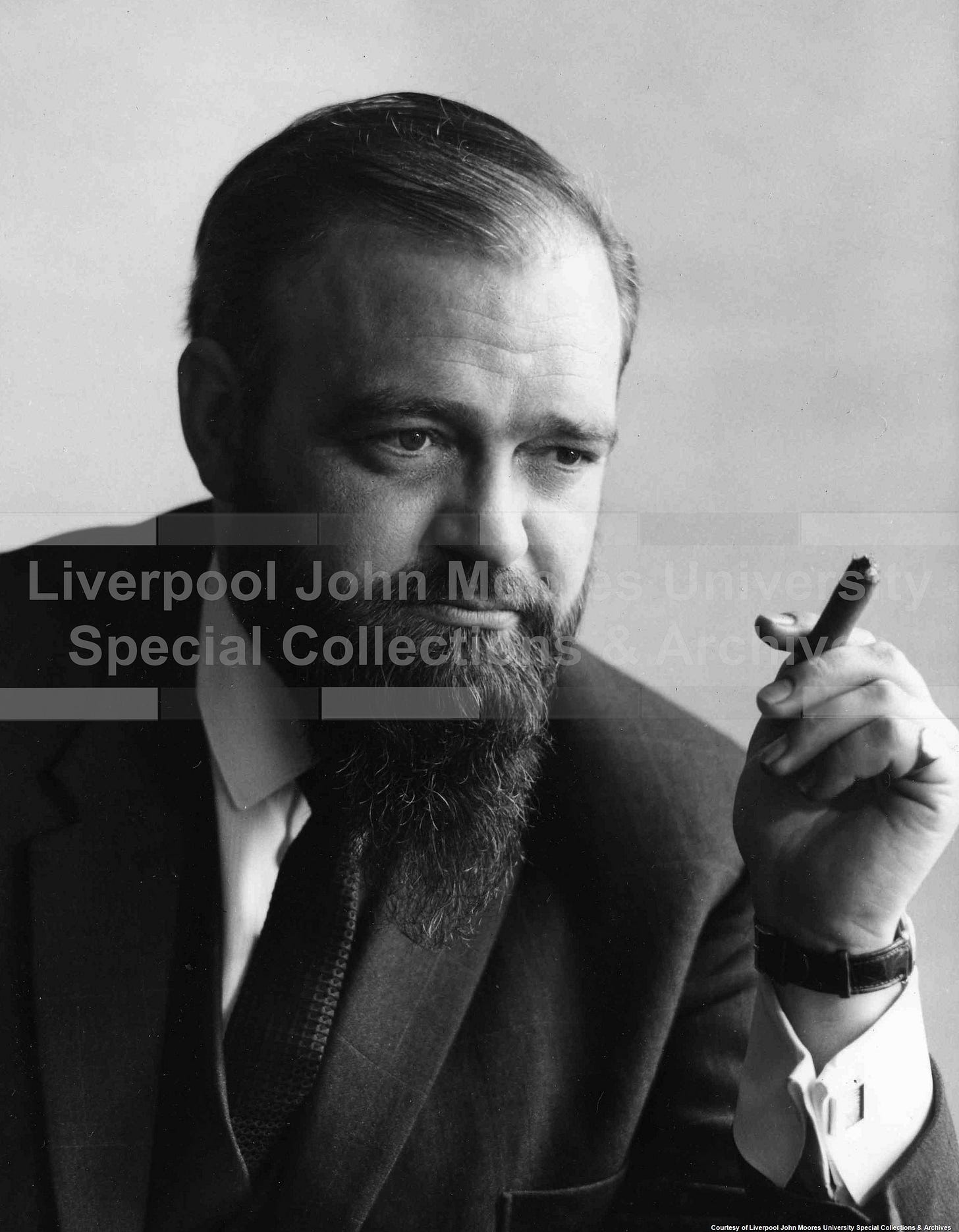About Cybernetics – 1
History 1940s-1950s
This post is the second in my series About Cybernetics – What It Is & Why It Matters.
The other posts are:
This series of posts is mostly historical. If you want to jump ahead to learn how to apply management cybernetics to real-world issues, Designing Freedom – 1 is a good place to start.
The Second World War
The USA at War
We talked in my last post about how Norbert Wiener had solved the problem of how to shoot down a moving aircraft using radar-controlled gunnery.
He had devised a method of using feedback from the radar, identifying where the target aircraft was and its speed & direction, to co-ordinate the movement of the gun to shoot down the aircraft, taking into account the speed at which the bullets would travel.
Wiener was fully aware that the control system would have to work on the same principles as how we coordinate our physical movements when we fire an arrow at a moving target.
He had been working with the Mexican physiologist Arturo Rosenblueth and US electrical engineer Julian Bigelow to develop the understanding and the electrical circuity needed for the gunnery control system.
In 1943, they had jointly written the paper Behavior, Purpose and Teleology which founded cybernetics before it had a name.
Great Britain at War
Meanwhile, on the other side of the Atlantic, the Royal Air Force (RAF) had developed a secret control system to defeat the German attempt to gain control of the airspace over England. Without air superiority in daylight hours, it would be impossible for Germany to launch a seaborne invasion of England across the Channel from defeated France. The Battle of Britain was fought in the sky, mostly over South East England, in beautiful sunny weather, from July to October 1940.
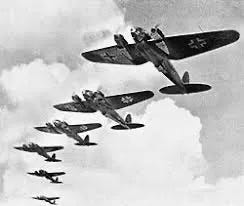
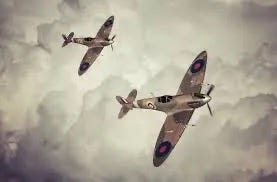
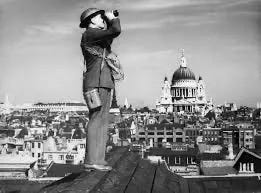
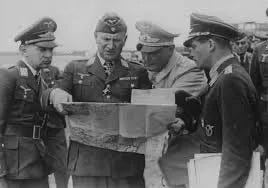
The German Luftwaffe expected to easily destroy the RAF’s fighter squadrons, but were baffled by their ability to locate and destroy their incoming bomber fleets. They tried to destroy the radar towers, airfields and aircraft, but failed, because they could not make out what they needed to destroy to disable the system, and the British were able to keep the whole system going until the Luftwaffe gave up the struggle.
The Dowding System remained top secret until Air Chief Marshal Hugh Dowding's official despatch in September 1946. Although the computer had not yet been invented, the system was able to manage air battles with a delay of only 90 seconds behind events. This was the world’s first real-time control system. All the air traffic control systems in the world work on the principles worked out in this one.
The core of the system was seventy feet underground at Uxbridge in Middlesex.
No.11 Group of RAF Fighter Command was responsible for the airspace where most of the battles took place. They controlled the battle from their Operations Room by plotting incoming Luftwaffe fleets on the map seen above, and directing their fighters to intercept them.
The decisive day of the Battle was 15th September 1940. After that, the Luftwaffe gave up their daylight attacks and Hitler postponed, then abandoned, his invasion plan.
You can visit the Operations Room, which is set up as it was at the height of battle that day.
Sadly for Londoners, the night-time Blitz that made their lives miserable continued until May 1941, when the Luftwaffe turned its attention to the invasion of the Soviet Union. It was not yet possible to intercept bombers at night, so the British public did not realise how decisive the victory that summer had been.
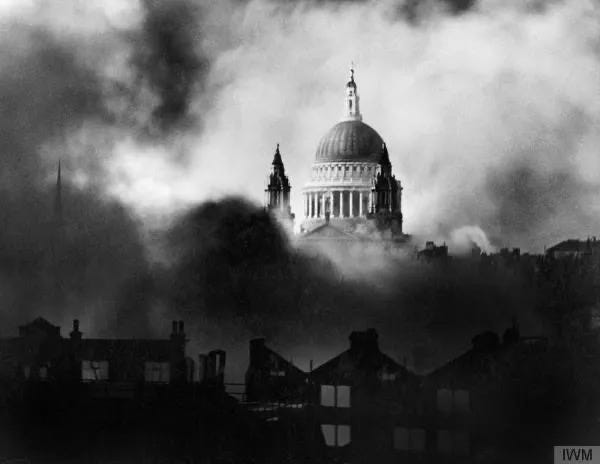
Meanwhile, Station X at Bletchley Park was secretly breaking German radio cypher codes. This is where Alan Turing’s work laid the foundations of modern computing.
1945-1950s
The IAS Computer
Julian Bigelow, whom we already mentioned above, became Chief Engineer for the building of John von Neumann’s computer at Princeton University’s Institute for Advanced Studies (IAS).
Although von Neumann thought its architecture was somewhat arbitrary, almost all subsequent computers still use it.
The Macy Conferences
Between 1946 and 1953, the ten Macy Conferences in the USA attracted experts including mathematicians, engineers, biologists, anthropologists, neurologists, and psychologists to work out the underlying principles of cybernetics.
This was a predominantly male world, but Margaret Mead, renowned for her anthropological studies in Samoa, also attended.
The Ratio Club
At about the same time, the Ratio Club was meeting over dinner to bring together a similarly diverse group of experts in England.
W. Ross Ashby
One of the stalwarts of the Ratio Club was the psychiatrist W. Ross Ashby, the author of many works including Design for a Brain published in 1952, in which he introduced many key ideas, including his Law of Requisite Variety.
Warren McCulloch & Walter Pitts
In 1943, Warren McCulloch & Walter Pitts published a paper A Logical Calculus of the Ideas Immanent in Nervous Activity. This introduced the first mathematical model of the nervous system as a network of neurons. It is remarkable that ChatGPT and its competing Large Language Models, which have caused a sensation since November 2022, are all founded on their work in this paper.
McCulloch organised and chaired the Macy Conferences, while the child prodigy Pitts worked quietly, keeping out of the limelight.
Stafford Beer
Stafford Beer was a young British Army officer, stationed in India during the Second World War. When India became independent in 1947, he returned to England and was assigned to the Human Factors Branch of Operations Research at the War Office. Operations Research was the secret discipline used to design the Dowding System.
Beer left the Army in 1949 and joined the steel industry in Sheffield, where he used what he had learned to improve steel production.
He had read Norbert Wiener’s 1948 book, and wrote to him declaring “I think I am a Cybernetician”. Wiener agreed and later identified Beer as “The Father of Management Cybernetics”.
Beer was the first person to realise that cybernetics could be used to understand and improve human organisations. He was the first to use a computer to solve issues in running an industrial concern.
Conclusion
The pressures of war had brought together very clever people from a diversity of social backgrounds and disciplines and given them unprecedented opportunities to turn their theories into practical means of defeating the enemy.
Once peace returned and the veil of secrecy lifted, they realised that they had invented what many people now call systems thinking and named their new field cybernetics.
The general public barely noticed any of this, because it had not yet impacted their lives.
In the 1960s-1970s they would begin to notice….
Stay tuned for the next exciting episode of About Cybernetics….


